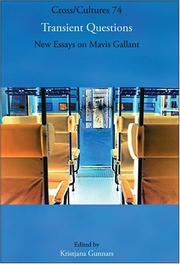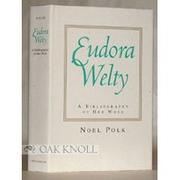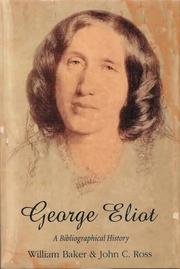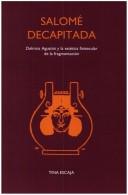| Listing 1 - 10 of 1712 | << page >> |
Sort by
|

ISBN: 9789004490543 9789042016835 Year: 2004 Publisher: Leiden; Boston : BRILL
Abstract | Keywords | Export | Availability | Bookmark
 Loading...
Loading...Choose an application
- Reference Manager
- EndNote
- RefWorks (Direct export to RefWorks)
Mavis Gallant has been a leading literary figure in Canada since her first short story, published in 1951, and has grown to be considered internationally as a modern master of the genre. Her writing is nuanced, sensitive, gifted, deep and concise. She leaves everything open for the hidden potential that can always be discovered. Times change; society, history, politics may develop out of recognition. Cultures metamorphose. Literary landscapes and theories are renewed. But the classics of our time stay where they are, pillars of that which is solidly about us. Mavis Gallant's work is of that calibre: her writing will remain interesting and relevant no matter what else happens. This book is an exploration of what Gallant's readers are thinking now: where they place her in the panorama of literature and what meaning she has for them now. Scholars continue to probe into the stories, their characters, the capsules of history they present, and continue to find them challenging. As with Shakespeare, no amount of scrutiny will yield the final answer. That is how complex Gallant's writing is. Especially now, when the positioning of her characters is a more prominent condition in general, we need to review Gallant's artistic insights. As Francine Prose says in Harper's Magazine : Gallant's cast of characters are a "motley assortment of refugees, fugitives, and travelers" and "displaced persons scrambling on the margins of a society they will never belong to." This is the modern condition. As with other great writers, Gallant shows herself to be prophetic in cutting down to the roots of the sensibility of our era. We are reading her work, and we are thinking about it and talking about it. This book is part of that large conversation. Contributors are: Neil Besner, Di Brandt, Nicole Côté, John Lent, Gerald Lynch, Maria Noëlle Ng, Peter Stevens, Simone Vauthier, Per Winther.
Book
Year: 2007 Publisher: London : Taylor & Francis,
Abstract | Keywords | Export | Availability | Bookmark
 Loading...
Loading...Choose an application
- Reference Manager
- EndNote
- RefWorks (Direct export to RefWorks)
Recently, literary critics and some historians have argued that to use the language of separate spheres is to "mistake fiction for reality." However, the tendency in this criticism is to ignore the work of feminist political theorists who argue that a range of ideologies of the public and private consistently work to mask gender inequalities. In Keeping Up Her Geography, Tanya Ann Kenedy argues that these inequalities are shaped by multiple, but interconnected, spatial constructions of the public and private in US culture. Moreover, the early twentieth century when key spatial concepts - the nation, the urban, the regional, and the domestic - were being redefined is a pivotal era for understanding how the public-private binary remains tenaciously central to the defining of gender. Keeping Up Her Geography shows that this is the case in a range of literary and cultural contexts: in feminist speeches at the World's Columbian Exposition, in middle-class women's urban reform texts, in southern writer Ellen Glasgow's novels, and in the autobiographical narratives of Zora Neale Hurston and Agnes Smedley.
Book
ISBN: 9575221966 Year: 1998 Publisher: 臺北 聯合文學
Abstract | Keywords | Export | Availability | Bookmark
 Loading...
Loading...Choose an application
- Reference Manager
- EndNote
- RefWorks (Direct export to RefWorks)
Book
ISBN: 9004650520 Year: 1994 Publisher: Amsterdam : BRILL,
Abstract | Keywords | Export | Availability | Bookmark
 Loading...
Loading...Choose an application
- Reference Manager
- EndNote
- RefWorks (Direct export to RefWorks)
Gautier's poetry merits an attentive reading which respects his own essential criterion of poeticity, namely, textuality. This is a poetry which puts on display its literariness, that is, its existence as cultural artifact. In so doing, however, it also puts on display the absence of and its resistance to whatever personal or real signified it would evoke or name. Its beauty and self-indulgent pleasure reveal their hollowness and inadequacy. Its chiseled, polished surface renders its borders or limits and its play unsatisfyingly and teasingly perceptible. Its very superficiality allows, invites and seduces the reader to go entre les lignes and perceive the mystery, not of what has been symbolically buried/unburied, concealed/revealed, but of the truly absent, the abîmes superficiels. Chapter 1, focusing on texts from the Poésies of 1830, studies the intextual repetition of Gautier's poetry, the citations, imitations and transpositions which make evident the poetry's displacement of the significant and the personal into aesthetic simulacra. Chapter 2 deals with the poems of Gautier's second collection, Albertus, and analyzes the use of allegory and of humor as further markers of textual substitution. The inherent lifelessness and illusoriness of the textual artifact is revealed in the poems of La Comédie de la Mort, the collection examined in chapter 3. Chapter 4 analyzes the so-called descriptive, referential poetry of España, and finds that the monde extérieur of Gautier's poetry functions to express an absence of self and is itself always shown to be other than the Other. The dimunition of the poetic effected in Emaux et Camées is the subject of chapter 5, and chapter 6 deals with the contextuality, the fetishism, and the eroticism revealed in a miscellany of poems - in particular the libertine poems - which do not figure in Gautier's five major collections. By short-circuiting significations and transforming them into seductive appearances, Gautier reveals himself to be the acknowledged maître of both Baudelaire and Mallarmé.

ISBN: 9789004490727 9789042013087 Year: 2002 Publisher: Leiden; Boston : BRILL
Abstract | Keywords | Export | Availability | Bookmark
 Loading...
Loading...Choose an application
- Reference Manager
- EndNote
- RefWorks (Direct export to RefWorks)
This is a timely and comprehensive study combining various critical approaches to the fiction of Buchi Emecheta, one of Africa's most illustrious and contentious women writers. Feminist (Showalter, Cixous, Kristeva) and postcolonial approaches (writing back) are taken to Emecheta's texts to illuminate the personal, political and aesthetic ramifications of the production of this "born writer." Poststructural programmes of analysis are shown to be less relevant to this writer's fiction than Marxist and Bakhtinian perspectives. Emecheta is shown to be a bridge-builder between two cultures and two worlds in narratives (both challenging and popular) characterized by ambiguity, ambivalence and double-voiced discourse, all of which evince the writer's determination to expose imaginatively the colonial heritage of centre-periphery conflicts, cultural corruption, ethnic discrimination, gender oppression, and the migrant experience in multiracial communities.
Periodical
ISSN: 23404930 Year: 1998 Publisher: Castelló : Seminari d'Investigació Feminista, Universitat Jaume I,
Abstract | Keywords | Export | Availability | Bookmark
 Loading...
Loading...Choose an application
- Reference Manager
- EndNote
- RefWorks (Direct export to RefWorks)
Feminism --- Women and literature --- Literature

ISBN: 0878055665 Year: 1994 Publisher: Jackson University press of Mississippi
Abstract | Keywords | Export | Availability | Bookmark
 Loading...
Loading...Choose an application
- Reference Manager
- EndNote
- RefWorks (Direct export to RefWorks)

ISBN: 0712347658 Year: 2005 Publisher: New Castle Oak Knoll press
Abstract | Keywords | Export | Availability | Bookmark
 Loading...
Loading...Choose an application
- Reference Manager
- EndNote
- RefWorks (Direct export to RefWorks)

ISBN: 9789004483835 9789042013469 Year: 2001 Publisher: Leiden; Boston : BRILL
Abstract | Keywords | Export | Availability | Bookmark
 Loading...
Loading...Choose an application
- Reference Manager
- EndNote
- RefWorks (Direct export to RefWorks)
Delmira Agustini nace y publica en un período de crisis de valores que extiende las inquietudes del final de siglo XIX a las primeras décadas del XX. Su condición de mujer complica e ilustra al mismo tiempo la multiplicidad del fenómeno del modernismo hispánico. El presente volumen propone nuevas alternativas de aproximación al modernismo a través del análisis de la obra de Delmira Agustini, una autora integrada a los valores fetichistas de su época al tiempo que los amplia y supera con un virtuosismo sin precedentes. La implicación estética de Agustini en el modernismo y la modernidad convive, por lo tanto, con la relativización de esos mismos conceptos al presentarse el objeto tradicional femenino como sujeto hablante susceptible de univocidad y trascendencia. Así sucede en la utilización e implícita corrección de ciertos mitos como Pigmalión, Salomé, Leda y el cisne, mitos que la autora personaliza y subvierte al articularlos desde una voz lírica que explicita su condición deseante de mujer. Con su propuesta transgresora, Delmira Agustini plantea una modernidad discrepante de las nociones del poder que resultan ineficaces al abordar la problemática de la escritora latinoamericana. "Salomé decapitada" remite entonces a la ex-centricidad de una autora que se atrevió a formular su visión poética, convirtiéndola en una de las voces más poderosas y singulares de la literatura iberoamericana.
Book
ISBN: 0192886312 9780192886316 9780192886293 Year: 2023 Publisher: New York Oxford University Press
Abstract | Keywords | Export | Availability | Bookmark
 Loading...
Loading...Choose an application
- Reference Manager
- EndNote
- RefWorks (Direct export to RefWorks)
In the late seventeenth and eighteenth centuries, the 'woman writer' emerged as a category of authorship in England. Publishing the Woman Writer in England, 1670-1750 seeks to uncover how exactly this happened and the ways publishers tried to market a new kind of author to the public. Based on a survey of nearly seven hundred works with female authors from this period, this book contends that authorship was constructed, not always by the author, for marketappeal, that biography often supported an authorial persona rooted in the genre of the work, and that authorship was a role rather than an identity.Through an emphasis on paratexts, including prefaces, title pages, portraits, and biographical notes, Leah Orr analyses the representation of women writers in this period of intense change to make two related arguments. First, women writers were represented in a variety of ways as publishers sought successful models for a new kind of writer in print. Second, a new approach is needed for studying early women writers and others who occupy gaps in the historical record. This book shows that astudy of the material contexts of printed books is one way to work with the evidence that survives. It therefore begins with a very familiar kind of author-centric literary history and deconstructs it to conclude with a reception-centered history that takes a more encompassing view of authorship. Inaddition to analysis of many little-known and anonymous authors, case studies include Aphra Behn, Catharine Trotter/Cockburn, Laetitia Pilkington, Marie-Catherine d'Aulnoy, and Anne Dacier.
| Listing 1 - 10 of 1712 | << page >> |
Sort by
|

 Search
Search Feedback
Feedback About UniCat
About UniCat  Help
Help News
News